Sakya Monastery, Tsang region, Central Tibet
mid-18th century
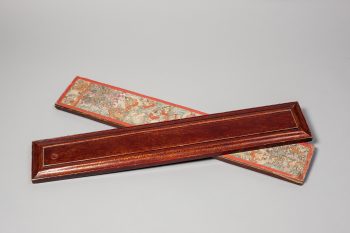
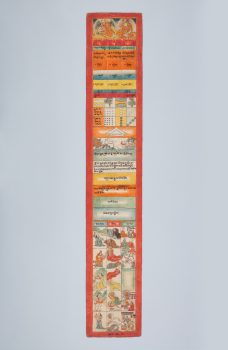
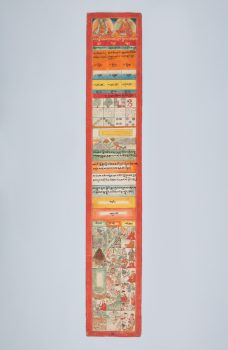
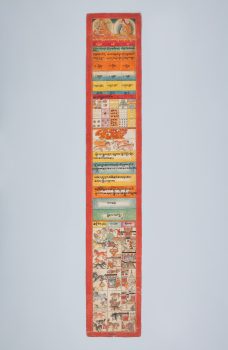
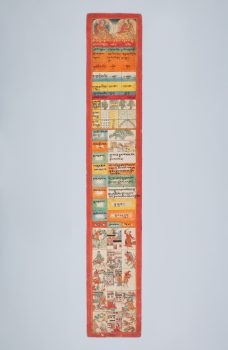

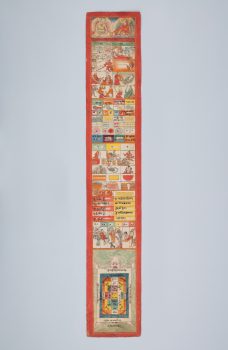
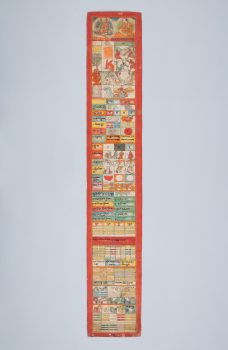
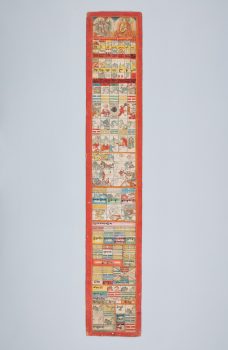

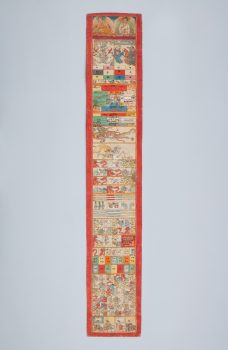
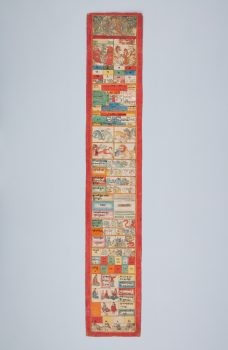

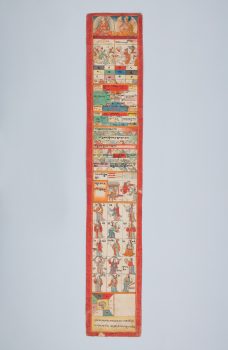
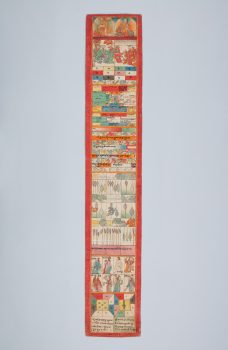
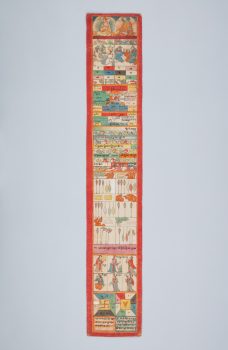
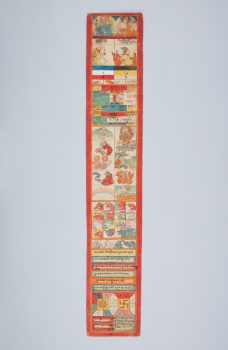
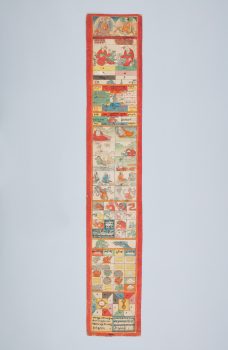
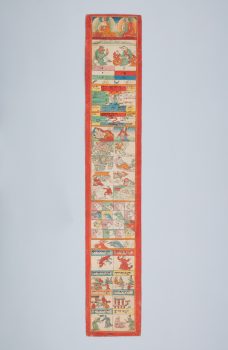
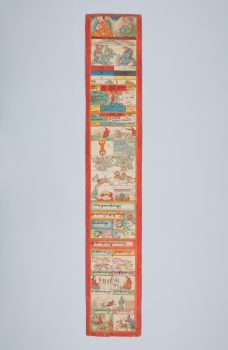
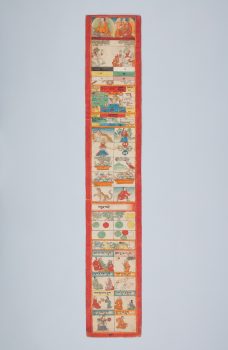
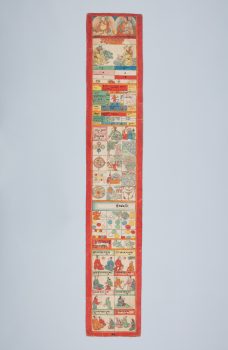
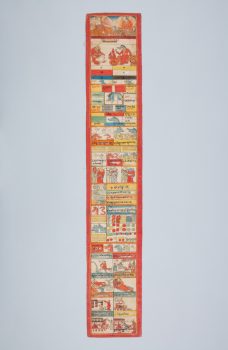
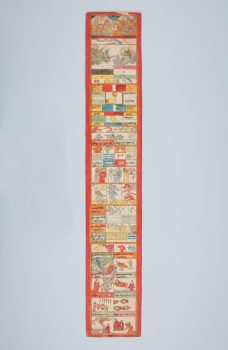


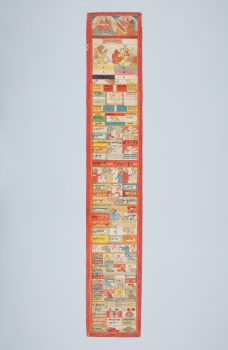
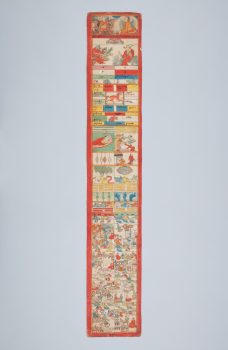
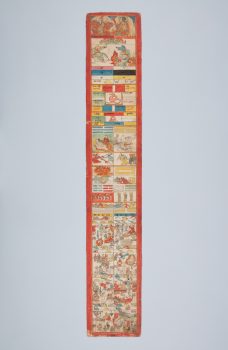
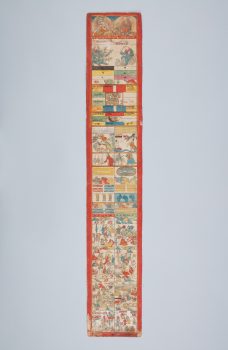
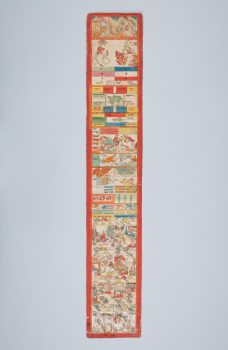

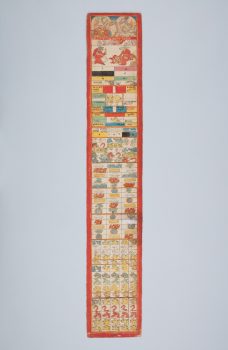
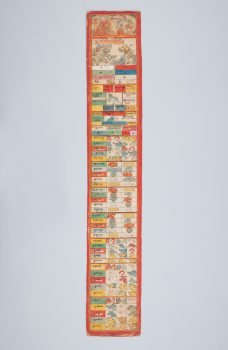
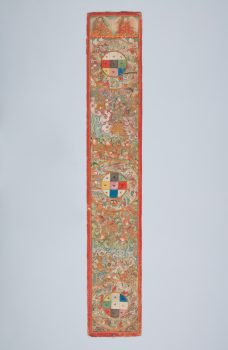
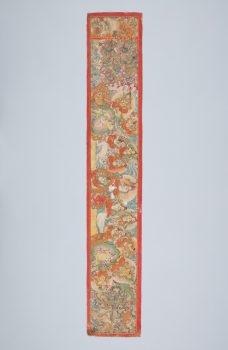
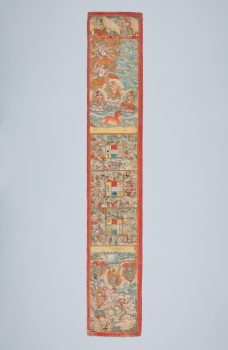
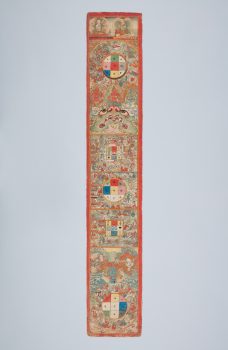
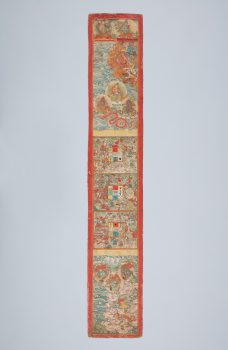
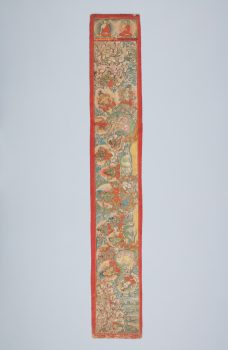
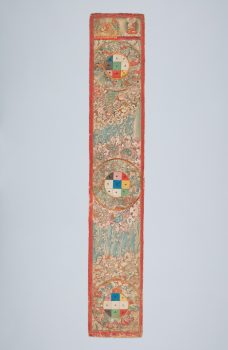
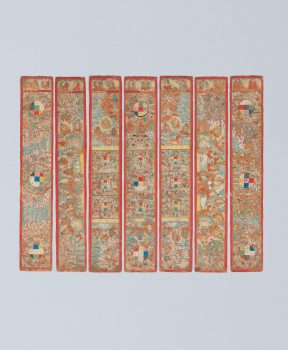
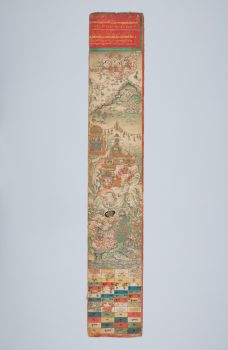
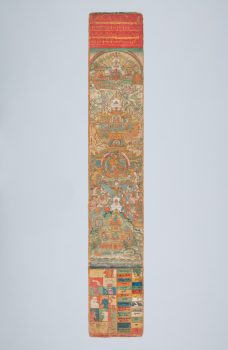
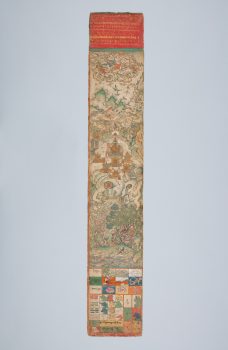
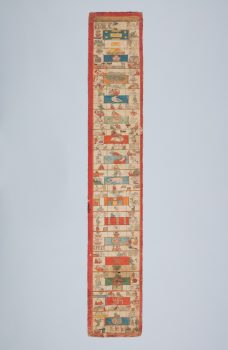
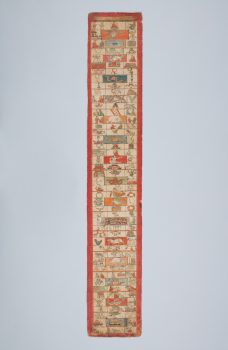

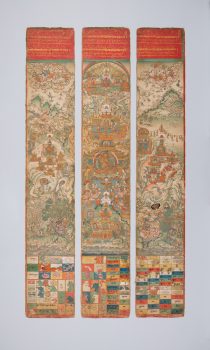

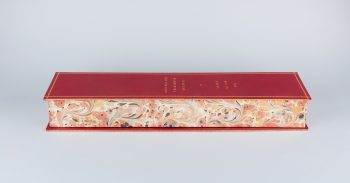
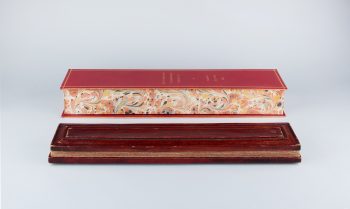
Sakya Monastery, Tsang region, Central Tibet
mid-18th century




















































This illustrated manuscript of the White Beryl, a standard seventeenth century work on divination and astrology written by the regent to the Fifth Dalai Lama, Desi Sanggye Gyatso (1653–1705), was rendered in the same style as the elaborate illustrations typical of Gyatso’s famous set of medical paintings. Executed after his death, the manuscript has hundreds of small paintings on a total of ninety four folios enclosed within a pair of beautifully painted, red and gold lacquered wooden book covers decorated with dragon and flower patterns. On several folios this manuscript shows Manjushri as the source of knowledge about divination. Other illustrations on the leaves range from the divination of obstacle years to ill health and death and include dozens of calculation charts.
While the primary religious goal for followers of Buddhism is enlightenment, many of the practices also serve secular goals related to daily life, including ethical conduct and cultivating well-being.
Teachings and precepts that offer practical and experiential guidance. In Buddhism instruction is primarily an oral tradition and is often targeted to the specific needs or disposition of a student or disciple.
The passing down of authentic Buddhist teachings from a teacher to a disciple or student, often in the form of a text in a ritualistic context.
Today, Tibetans primarily inhabit the Tibetan Plateau, situated between the Himalayan mountain range and the Indian subcontinent to the west, Chinese cultural regions to the east, and Mongolian cultural regions to the northeast. During the 7th to 9th century, Tibetan rulers expanded their empire across Central Asia, and established Buddhism as the state religion.
Get the latest news and stories from the Rubin, plus occasional information on how to support our work.